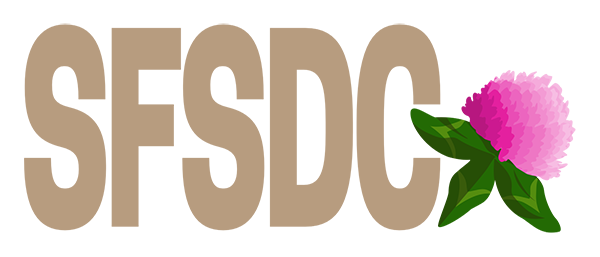Evaluating the Use of Direct Seeding and Pre-Seedling Cultivation in Forage Seed Crop Establishment
Objectives: This project evaluates and demonstrates the use of direct seeding with the use of pre-seeding herbicide applications or pre-seeding cultivation when establishing forage seed crops.
Management Options to Control Lesser Clover Leaf Weevil in Red Clover
Objectives: Controlling lesser clover leaf weevil has become an important operation in the production of red clover seed in Saskatchewan, yet producers are often unsure of proper timing of application.
3rd Year Report of Evaluating the Placement of Companion Crops in Forage Seed Production
Project Objectives: SFSDC wanted to determine if there are any residual effects of planting meadow bromegrass in alternate rows with wheat on seed yield of the forage in the second year of seed production.
Controlling Noxious Weeds and Improving Seed Quality in Established Forage Legume Seed Crops
Project Objectives: SFSDC wanted to demonstrate the importance of controlling Noxious and hard to control weeds such as cleavers and wild oats in established forage legume seed crops. The project used registered herbicides, including those registered under the minor use registration program, for weed control.
Fungicides for Use in Forage Seed Grasses 2015
Project Objectives: The objective of this project was to demonstrate the importance of the control of leaf diseases and their impact on forage seed yield and quality as well as forage quality. The project uses registered fungicides on established timothy and tall fescue crops.
Evaluating the Placement of Companion Crops in Forage Seed Production
Project Objectives: SFSDC wanted to demonstrate the effectiveness of using alternate row companion crop planting when establishing forage seed crops. The project demonstrated the agronomic and economic advantages of alternate row planting using presently available equipment technology.
Demonstrating the Proper Timing and Application of a Desiccant on Red Clover Seed Crops
Project Objectives: Reglone is the only registered desiccant for use on red clover seed production. It typically takes longer than anticipated to dry down the crop enough for harvest.
Evaluating the Placement of Companion Crops in Forage Seed Production 2017-2018
Project Objectives: SFSDC wanted to demonstrate the effectiveness of using alternate row companion crop planting when establishing forage seed crops. The project demonstrated the agronomic and economic advantages of alternate row planting using presently available equipment technology.
Forage Seed Response to Copper Fertilization
In June 2013, we applied foliar EDTA chelated copper to established timothy (3 locations) and hybrid bromegrass (1 location) on replicated mini-plots. This was repeated in June of 2014 and June 2015, but we added 2 other liquid Cu foliar treatments; dropped one unresponsive site and added another potentially responsive hybrid bromegrass site.
Assessment of Urease and Nitrification Inhibitors in Forage Seed – U of S Final Report
Enhanced efficiency fertilizers (EEFs) are intended to reduce nutrient losses to the environment, thereby increasing nutrient availability for plant production. One category of EEFs is nitrogen (N) fertilizer that is stabilized using compounds such as urease and nitrification inhibitors, both of which slow the release of N by controlling key microbially mediated processes.
Controlling Noxious Weeds and Improving Seed Quality in Established Forage Grass Seed Crops
Project Objective: SFSDC wanted to demonstrate the importance of controlling noxious and hard to control weeds in established forage grass seed crops. The project used registered herbicides, including those registered under the minor use registration program, for weed control.
Clover Casebearer Research Report – University of Alberta
Chapter 1: Efficacy and mechanisms of communication disruption of the red clover casebearer moth (Coleophora deauratella) with attractive and unattractive pheromone formulations.
Herbicide Screening for Ten Forage Seed Grass and Legume crops grown in their establishment year, 2013
Weed control is critical in the establishment year for forages grown for seed production. With that in mind we initiated a research trial to identify herbicide options that provide adequate weed control while posing acceptable risk of crop damage for selected forage species where suitable weed control treatments do not currently exist.
Forage Seed Yield Response to N & P Fertilizer
No studies have been conducted to determine forage seed yield response to N and P fertilizers as affected by the availability of these elements in northeastern Saskatchewan soils.
Fertilizing Forage Grasses for Seed Production
Project Objectives: The objective of this project was to compare the benefits of using coated fertilizer products to non-coated products on forage grasses grown for seed and to demonstrate if field scale coated fertilizers will increase yields when applied directly after harvest.
Fungicides for Use in Forage Seed Grasses
Project Objectives: The Saskatchewan Forage Seed Development Commission (SFSDC) wanted to demonstrate the use of registered fungicides, Tilt 250 E (propiconozole) on timothy and Headline EC (pyraclostrobin) on perennial ryegrass, to determine if leaf disease could be controlled and seed yield and quality improved.
Bromegrass Seed Midge Control
The bromegrass seed midge (Contarinia bromicola, Figure 1) is a common pest of smooth bromegrass (Bromus inermis) in Saskatchewan, reported to cause seed yield reductions up to 50% (Knowles 1973).
Pod Sealant on Birdsfoot Trefoil
Birdsfoot trefoil (Lotus corniculatus L.) is a non-bloating perennial legume that is used as a pasture legume around the world (Sareen 2004). Seed production of trefoil, especially pedigreed seed is not meeting demand and seed prices have increased substantially in recent years.
Insecticide Screening in Red Clover
Objective: To determine the efficacy of the insecticides Cygon, Decis and Sevin XLR for the control of lesser clover leaf weevil in established red clover.
Herbicide Screening in Red Clover and Perennial Ryegrass
Objective: To determine the tolerance of established red clover to a number of post-emergence herbicides. Three studies were conducted in the Arborfield – Carrot River; however, seed yields were obtained only at the two Arborfield sites.
